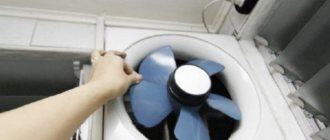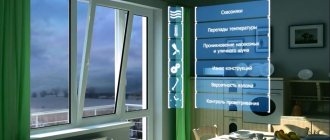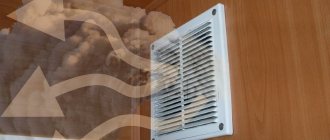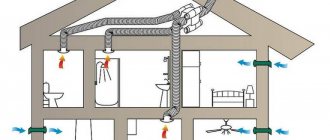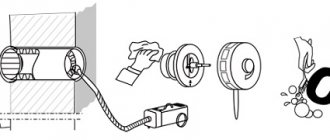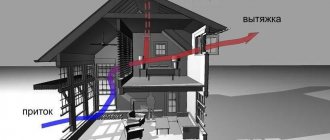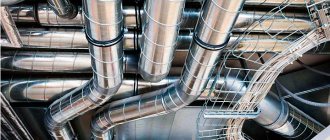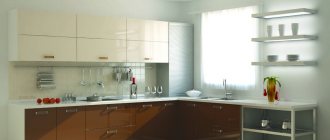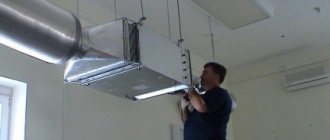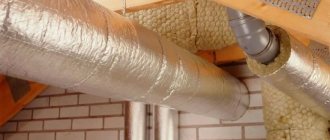31.08.2017
How should a person feel when waking up in the morning? If you went to bed no later than 23 hours, did not take alcohol or heavy food before bed and are relatively healthy, then the normal state after sleep is lightness, vigor and a surge of strength. If this sounds like you, then we should congratulate you - you are one of the lucky few who know the most important condition for healthy sleep.
This condition is fresh air in the apartment during sleep , ensuring proper rest.
The quality of the air you breathe at night determines your condition and mood for the whole day.
If the air is stale, with an excess of carbon dioxide, then you will wake up already tired, as if in a dope. Your only desire will be to return to bed and not stay there until lunch. Fresh air filled with oxygen has the opposite effect - you usually wake up on your own, without an alarm clock, full of energy and ready to work. One can say about the state of healthy sleep “like in a country house”
Does natural ventilation provide fresh air into the apartment?
Here the question arises - how to make the air in the apartment fresh and clean if, for example, it’s winter outside and you catch a cold easily? In the summer, you can’t really open the windows either - dust, noise, tobacco smoke, and those who like drunken nighttime gatherings simply won’t let you sleep. What happens if you close the windows at night? Even with a large area of the room, after 2-3 hours the air in the room will be oversaturated with breath products, and in the morning you will wake up exhausted and with a headache.
Should I ventilate more often? Useless. You will have to open the windows every 20-30 minutes because there is no constant flow of fresh air. It turns out to be a vicious circle: when you open the windows, drafts and colds begin, fluff and dust flies, it’s noisy and dirty. If you keep the windows closed, it’s stuffy, the humidity increases, and an unhealthy microclimate is created. As a result, the question of how to provide fresh air in an apartment without drafts, noise and dust remains open .
Why is that? The fact is that in almost 99% of apartment buildings the design does not provide for forced ventilation. Internal ventilation in old houses most often simply transfers “odors” from kitchens and toilets from one apartment to another, and in new buildings built strictly according to SNiP, all extraneous odors are removed to the outside of the building. And it's all. It turns out that the task of providing apartments with fresh air falls on the residents themselves - although you won’t read about this in developer brochures.
Fortunately, you don't have to invent ways to solve this problem - it has already been solved with the advent of new compact forced ventilation systems on the market that are designed to take into account today's levels of air pollution. An example of a supply and exhaust unit that can provide fresh air to an apartment in winter and summer without opening windows is Breezer Tion o2 - a compact, high-performance device with electronic control.
It must be said that other means can now be used to solve the problems described above. Let's try to evaluate how effectively they do this.
Stuffy indoors: short-term and long-term consequences
At the same time, few people remember that due to a sedentary lifestyle (which is harmful in itself), most of the time we breathe “waste” air, oversaturated with carbon dioxide and other respiration products. A simple example: if you do not ventilate a room at all throughout the day, then by evening the level of CO2 in it will be 20 times higher than the norm. Of course, in this situation, a full night’s rest is impossible, and exercise on a treadmill or exercise bike will only bring harm instead of benefit.
What happens in the body of a person who breathes “waste” air for a long time? When there is an “overdose” of carbon dioxide in the blood, CO2 begins to replace oxygen in the red blood cells. The breathing rate increases. O2 deficiency reduces the rate of oxidative processes, and toxins begin to accumulate in the blood at an accelerated rate.
Such an experiment on oneself leads to a natural result - loss of performance, headaches, lethargy, drowsiness, and a depressed psychological state.
In the long term, staying in a closed, poorly ventilated room for a long time is a direct path to chronic diseases.
Four reasons to ventilate more often
- The first and most obvious reason is the need for O2 . When we open the windows, the “old” air leaves through the hoods, and its place is taken by fresh air, saturated with negative ions and oxygen;
- A good microclimate in the bedroom is an important condition for good and deep sleep, without a headache in the morning!
- The third reason is regulation of the room microclimate. Ventilating the apartment allows you to make the humidity and air temperature more comfortable.
- Removing unpleasant odors. A draft allows you to quickly remove foreign odors from the room - for example, burnt food, household chemicals, oil paint and others.
An arsenal of modern ventilation products: from air purifiers to air conditioners
Air conditioner . Strictly speaking, it is not a ventilation system: its main function is to maintain a given temperature in the room. However, here we must take into account the existing stereotype - most consumers believe that the street (outdoor) unit of a split-system air conditioner “drives” fresh air into the apartment. Actually this is not true. An external unit is needed to evaporate moisture and reduce noise during system operation, as well as mainly to release the heat that the air conditioner produces in exchange for cooling the apartment.
The reader may have doubts about this, because air-conditioned air feels fresh. This feeling is deceptive - this air may have a high content of carbon dioxide, but due to the lower temperature and low humidity it seems clean and fresh.
So, the conclusion is this : the air conditioner has nothing to do with ventilation, its task is to cool the air.
Ventilation when unwell
Is it possible to ventilate an apartment in winter if there is a person in the room with a cold, flu or some other ailment? Not only is it possible, but it is also necessary. In winter, excessively dry, warm air leads to overdrying of the mucous membranes and a decrease in their protective functions. In such conditions, the infection quickly spreads among family members, despite all precautions. For a speedy recovery, fresh air and optimal humidity are needed.
When you cough or sneeze, a cloud of microparticles of biological fluids containing viruses or bacteria is released into the air. In dry air they can remain indefinitely, but in humid air they quickly become saturated with moisture and settle down to the floor. Ventilation helps regulate humidity: you need to open the windows every 2 - 2.5 hours, in the absence of the patient. It is also recommended to use a humidifier and wet clean the room daily.
Air purifiers, ionizers and humidifiers
This is a fairly large class of devices that can be presented as unitary devices or as devices with combined functions, for example, “purifier-humidifier-ionizer”. Purifiers, or as they are also called “air washers,” absorb dusty, dry air, clean it and moisten it. Ionizers saturate the indoor air with negative ions, making it more beneficial for breathing. Humidifiers increase air humidity, compensating for the work of radiators.
All this is wonderful, but none of these devices solve the main problem - the removal of breath products and the flow of fresh air. What is the point of humidifying, ionizing and “washing” stale air full of carbon dioxide? And if you decide to ventilate the room, then the work of the purifiers essentially starts from scratch.
Aroma candles
Stores sell scented candles with different scents, from the smell of chocolate to the aroma of washed clothes.
Unfortunately, artificial fragrance can irritate the respiratory tract. It is better to buy candles made from natural wax. More expensive, but much more useful.
Anyone who knows how to make candles can make it themselves using:
- Essential oils;
- Coffee and cardamom beans;
- Cinnamon;
- Carnation;
- Vanilla.
Ventilators: ventilation valves, supply systems and breathers
Compared to the devices described above, ventilators look much more optimistic. With the help of such devices you can provide fresh air in the apartment without opening the windows. To install ventilators, a through hole is made in the wall; in the case of a valve, we are talking about natural ventilation due to pressure or temperature differences, and supply systems and breathers “drive” air from the street into the room forcibly.
Ventilation valves, for example, KIV 125, are a silent, simple device without a fan, with one basic level filter (G3). In order to provide fresh air in the apartment in the required volume, you need 2-3, or even more valves. Regarding supply systems, most do not have filters or heating, but provide forced ventilation.
Let's compare - the breather has a three-stage filtration system, air heating, provides high performance and an electronic autonomous control system.
If we objectively evaluate the capabilities of these types of devices, it becomes obvious: valves and conventional supply systems have their pros and cons. Breezers, in turn, are devoid of all their shortcomings and take into account all the needs of consumers. One of the most famous brands of breathers is Tion o2 - a product of the Russian company TION.
Traditional methods
Coffee grounds are a great refrigerator deodorizer. This is one of the natural ways to get rid of the smell of spoiled food caused by a broken freezer. Simply fill a cup with coffee grounds and place it in the freezer overnight. The coffee grounds will absorb the smell. You can add a couple of drops of vanilla to the grounds.
Lemons and oranges are great for home deodorizing. Never throw away the peels of these fruits. They can be used to wipe cutting boards and countertops. Place it in the kitchen and other places. And when dry, burn in the fireplace and boil with a little water.
Salt has the ability to neutralize unpleasant odors. Pour a salt solution into the drain if there is an unpleasant odor.
Instead of store-bought air fresheners, place clove buds or a cinnamon stick in a pan of water and simmer over low heat for half an hour.
You can turn on the oven and put a saucer with spices. Leave the door open to fill the house with the aromas of herbs and spices.
Eucalyptus has antifungal and antibacterial properties. Place branches of the plant in places where there is a musty smell.
Types of apartment ventilation systems
| Type of supply ventilation | Performance | Filtration | Extra options | Price with installation |
| Supply valve | from 0 to 54 m3/h per room | No | No | RUB 5,900 |
| Ventilator | from 10 to 160 m3/h per room | either a carbon filter or a G3 coarse filter | no air heating, low noise level, 7 speeds | RUB 22,490 |
| Breezer | from 30 to 130 m3/h per room | three filters: fine filter F7, HEPA filter H11, carbon filter | heating from -40°С to +25°С with climate control, average noise level, 4 speeds | RUB 28,900 |
| Central supply ventilation | about 300-500 m3/h for the whole apartment | additional filters for an additional fee: coarse filters G3-G4, fine filters F5-F7, carbon filters | water or electric air heating, low noise level, for an additional fee you can install cooling and humidification modules | about 100,000 rubles + costs for additional modules + repair costs |
Volatile Organic Compounds (VOCs)
Volatile organic compounds (VOCs) are organic substances that occur in gaseous form in the air. Typical indoor sources of VOCs include bacteria and mold, plastics, building materials, furniture and carpets, as well as cleaning products and smoking waste. VOCs can cause a range of symptoms in people, such as headaches, fatigue, sleep disturbances, respiratory irritation and hypersensitivity reactions. Such symptoms are referred to as “sick building syndrome.”
Air purifiers such as Roger and Roger little filter VOCs from the air. However, the carbon filter must be changed regularly as it gradually becomes filled with pollutants. Along with using an air purifier, it is also recommended to identify and eliminate the source of pollution.
Breezer TION o2: new generation of supply ventilation systems
How does Breezer make the air in the apartment fresh and clean?
Breezer is a compact air supply ventilation device equipped with a filter system and air flow heating. For installation, a through hole is made in the wall, after which the device itself is installed on the wall. The principle of its operation is quite simple - an electric fan provides air flow from the street, and a filter system deeply cleans it from dust, pollen, fluff, odors, microorganisms and car exhaust. In winter, the air flow is heated to a comfortable temperature, which eliminates drafts . The result of the work of the Tion o2 breather is fresh air in a heated apartment.
Medley
A mixture of dry herbs, flowers, and fruit peels will help refresh the air. A composition of dried flowers in a vessel made of glass, ceramics or bamboo looks impressive.
The only negative is that the aroma does not last very long. To enhance or prolong the aroma, you can sprinkle a few drops of essential oil.
Many herbs such as:
- Sage;
- Rosemary;
- Sagebrush;
- Juniper
disinfect the air during combustion.
Smart ventilation Tion MagicAir - fresh air while you sleep!
MagicAir is a new level of comfort in creating an ideal microclimate. We are talking about a high-tech device that evaluates the current air parameters in your apartment and provides autonomous control of climate control equipment.
This problem can be solved in three simple steps:
The first is the installation of a compact and “smart” supply ventilation breather Tion O2 MAC, which will provide a constant supply of fresh air, its thorough cleaning and heating.
The second is connecting and placing a MagicAir station, which will establish a wireless connection with the breather via the Internet. Now you can receive air quality data on your smartphone and remotely control the microclimate in your apartment.
Third , set your parameters for the CO2 content in the air and the breather will automatically maintain the optimal level of ventilation for you.
Medical reasons for low performance
For a modern person, the “average” level of well-being has become familiar - this is when, in the absence of any ailments, it is difficult to force yourself to overcome laziness and start doing something. In this state, in which many are permanently, some external stimuli are needed for everyday activities: coffee, a shower or your favorite food. Who has not now encountered such a problem as procrastination (constantly putting off important things)? Nowadays it is customary to explain it as banal laziness, but most often it is only a consequence of “average” health.
There are plenty of reasons for this “average” state - the accelerated pace of life, constant stress, digitalization and its inevitable companion - physical inactivity. Lack of physical activity among urban residents has been a problem since the days of television. In the Internet era, this problem has reached a new level, and after the lockdowns and quarantines of 2020, it has become a phenomenon on a planetary scale.
Particle sizes
Pollutant particles come in different sizes. It is usually measured in micrometers (µm). One micrometer or micron is one millionth of a meter, i.e. 0.0001 millimeters. The abbreviation “PM” (from the English “particulate matter”) is commonly used to refer to particle size, which is based on the US standard for particulate matter. It is not very easy to imagine the actual particle size. They are divided into the following conditional categories:
- large particles: PM 10 = dust, pollen, mold spores;
- medium particles: PM 2.5 = fine dust, large spores and other organic pollutants
- small particles: PM 1.0 and less = very fine dust, combustion particles, nanoparticles, bacteria, viruses and small spores
Important:
PM 1.0 and smaller particles are respirable, meaning they can penetrate the cell membranes of the alveoli (small air cavities in the lungs) and thus enter the bloodstream. From the bloodstream, these particles travel to vital organs (such as the heart), where they can accumulate and lead to disease.
